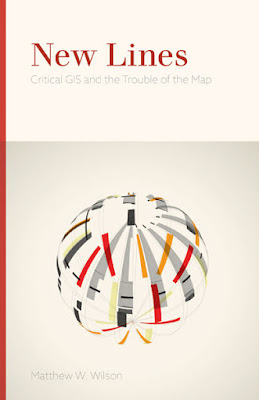New Geographies 07: OXAV
The launch of New Geographies 07 is set for tomorrow at Harvard GSD. I'm so thrilled that Ali Fard and Taraneh Meshkani invited me to contribute. My essay, titled "OXAV", attempts to provoke some thinking between early- and mid-20th century cartographic experimentation. The preprint is available here. Please contact me if you'd like a pdf of the published version.
Wilson, Matthew W. 2015. OXAV. In New Geographies 07 Geographies of Information. Harvard University Press. Ali Fard and Taraneh Meshkani, eds. pp. 174-177.
OXAV
"Although the distortions on the peripheries of the orthographic view may be extreme, we perceive the correct proportions because we visualize a three-dimensional body instead of a flat map. The use of these projections is limited to illustrative and educational maps, and in many cases the results will be amusing rather than of practical value, yet they open up a new avenue of experimentation, the end of which has not yet been seen." (Raisz 1943, 134)
"It will usually be necessary for the map designer to make a conscious choice between generalization and particularization. Each has its value, but if the main goal is good overall comprehension, we will usually need to generalize to a substantial degree. … No method has ever been invented which is capable of optimally serving both goals simultaneously." (Fisher 1982, 31)
The pages of New Geographies are undoubtedly filled with contemporary examples of experimentation in geographic representation. Stroke widths, object alignments, and typographic stylization dominate the last-minute, fine adjustments made in illustration software. And while these visual works likely share little in common with their predecessors from a century prior, that moment of experimental tinkering with a drawing binds these practices. What follows is a brief rumination on one of the first computer maps, articulated as an extension of the experimental methods of the early 20th century and provoking open questions as to the status of such experimentation in geographic representation today, now. [ ... ]





Comments
Post a Comment